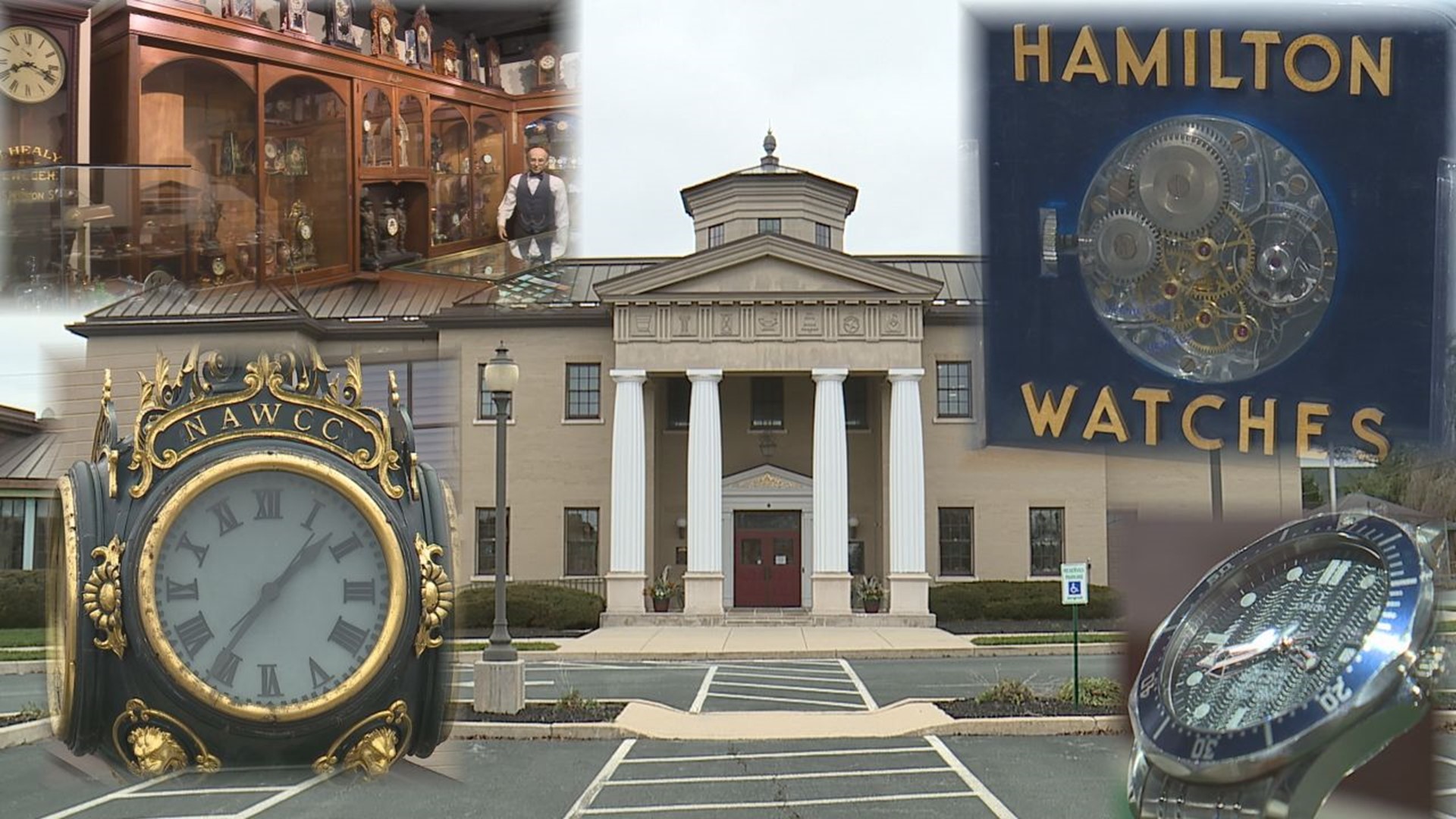COLUMBIA, Pa. — From the large to the small and the old to the new, the National Watch and Clock Museum in Columbia, Lancaster County has a little bit of everything.
That's what happens when you have the largest collection of timepieces in not just the area, the state, or the country, but in all of North America.
And it all started with one man.
"Earl Strickler, in the 1950s, was a Colombia resident and his house, over the years, got more and more full of antique clocks and antique watches, and that was the beginning of the museum," recalled Rory McEvoy, the executive director of National Association of Watch & Clock Collectors Inc.
And for the people behind the museum, there's a common theme of what led to an interest in horology.
"Remember those clear Swatch watches?" asked NAWCC associate editor Michael Schwartz. "It was looking at the clockwork through that clear dial."
"My first introduction to horology was basically, 'Oh, wooden clocks have movements inside that are also wood and can somehow tell time," said Janelle Soash with a smile.
As the NAWCC Collections and Research Assistant, it's up to Soash and her coworkers to give people who visit the museum a "big hand" to look behind the faces of the clocks and watches.
"It's wonderful to see the feedback that we get from those visitors who come in without any particular, specific interest," said McEvoy. "They're curious and they come away vastly surprised by the breadth of the collection and just the fact that there's so much more to it than just a face that tells the hour and the minute of the day."
With over 13,000 pieces, some on display, others cataloged, there's always something different to see, even for those who work there.
"One of the donations that we've gotten recently this year was a group of very delicate skeleton clocks," recalled Soash. "What's normally hidden away in a clock is on full display."
"Literally, every time I walk through the museum, I see something I haven't seen before, or even if it is something I've seen before, I'll notice some detail about it that I didn't notice before. There's just an embarrassment of riches," Schwartz said.
People can travel through time and see the evolution of timepieces, but it also blends the importance that this region has had on the history of horology.
"Sometimes the relatives of past donors come in and ask to see where the clock is, or where their watches are located," added Soash. "Recently, one of the Eberman relatives came to the museum. We're able to show her where that was and she was very happy about it."
Just across the street from the museum, they're thinking of the future.
"We reopened the school tentatively in 2021 and we've been refurbishing it and building up our offer of courses and it's turning out to be a big success story for us," stated McEvoy.
But as time goes by, the museum knows there's always room to improve and grow its collection.
"Displays become relevant. And their relevance, sort of, dilutes over time as tastes and interests change," said McEvoy. "And so with any successful museum, you have to be dynamic, you have to continue to appeal to to visitors."


